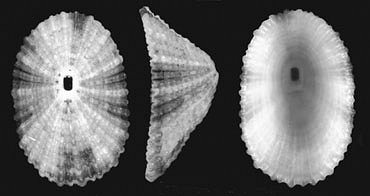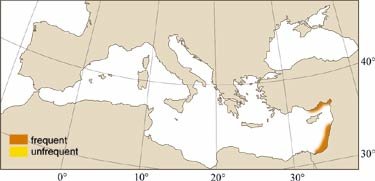
|
Relevant Synonyms
Misidentification
|
|
| photo: S. Gofas |
|
SHORT
DESCRIPTION
color :
shell whitish with radial sectors bearing dark blotches, inside white with external patterns showing through.
common size :
up to 20 mm long, 10 mm high in the Red Sea; more commonly 15 mm long. |
DISTINGUISHING CHARACTERISTICS
BIOLOGY / ECOLOGY
habitat :
on rocky intertidal zone; also on gravel bottoms dredged 20-70 m (Barash and Danin, 1992). |
|
1st
Mediterranean Record
|

|
|
DISTRIBUTION
|
ESTABLISHMENT SUCCESS
speculated reasons for success :
|
|
|
MODE OF
INTRODUCTION |
IMPORTANCE TO
HUMANS |
|
KEY
REFERENCES
|
|
|